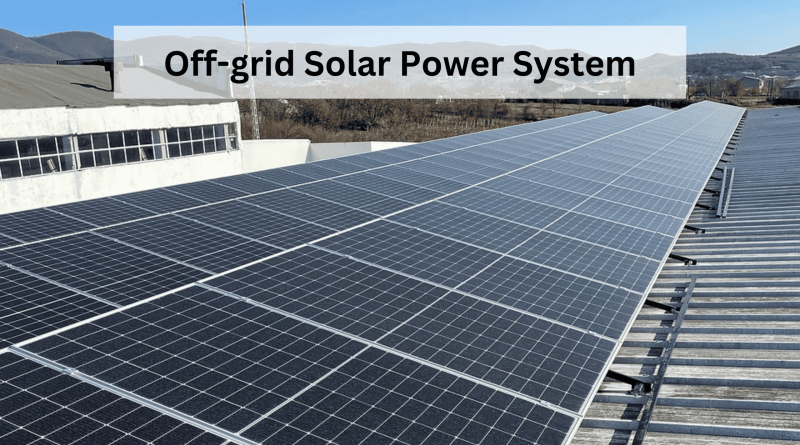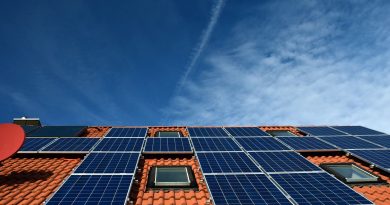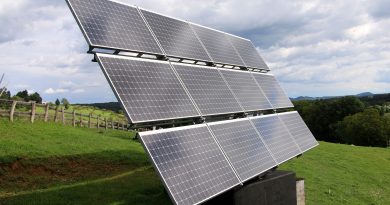Embracing Independence: Off-Grid Solar Solutions
Are you tired of experiencing power outages at your residence? Are you receiving electricity bills that are more expensive than anticipated? If so, I can offer a solution to your problem through this blog. The solution involves relying on your electricity board to generate electricity. Have you heard of Off-Grid Solar Systems? They’re an energy solution that operates independently of the main electrical grid. This is different from On-Grid systems, which rely on the grid. Off-grid systems are ideal for areas with frequent power cuts and high electricity bills, particularly in rural locations.
Table of Contents
Benefits of Off-Grid Solar Power Systems
The following are the benefits of an Off-Grid Solar Power system:
- Reduced energy costs.
- Decreased reliance on non-renewable resources and increased energy independence.
- Reducing greenhouse gas emissions and air pollution.
- Sustainable and efficient solution.
- Beneficial in rural and remote places.
Components of an Off-Grid Solar Power System
- Off-grid solar power systems consist of three main components: solar panels, a charge controller, and batteries. Solar panels convert sunlight into electricity by absorbing photons from the sun’s rays. These panels, which are made of photovoltaic cells, generate power that is stored for later use. The number and size of solar panels required for an off-grid installation depend on the user’s energy requirements and the amount of sunshine in the area. Thanks to technological advancements, solar panels are now more efficient and affordable, making them a practical option for off-grid energy.
- The charge controller plays a crucial role in ensuring that the batteries receive the correct amount of charge without being overcharged or damaged. It monitors the system’s voltage and current and adjusts the flow of electricity as necessary to keep the battery in optimal condition. Additionally, the charge controller prevents the batteries from being discharged above their safe limit, protecting them from potential harm caused by over-discharging. To maximize the efficiency and longevity of an off-grid solar system, a charge controller is an essential component.
- Batteries are essential in an off-grid solar system because they store excess energy produced during daylight hours. This stored energy can then be used to provide a reliable power supply during periods when there is no sunlight. Without batteries, an off-grid solar system would not be able to provide electricity when the sun is not shining, making them a crucial component in maintaining a self-sufficient and dependable off-grid solar system.
Design and Installation Consideration
- Determining energy needs: A critical first step in developing an off-grid solar system is assessing the energy use of the home or structure. This entails figuring out how much energy is used on a daily basis as well as when energy demand is at its highest. The system can be size correctly to ensure a sufficient power supply during the day and night by accurately assessing the energy requirements. During this assessment process, it is important to consider variables like the quantity of appliances, their power ratings, and the amount of time they are used. Future energy requirements or expansions must also be taken into account because they may affect the system’s capacity and architecture.
- Sizing the system: The amount of solar panels needed should be established based on the typical daily energy usage and the amount of sunshine in the area since they are responsible for turning sunlight into electricity. An accurate estimation can be made by taking into account elements like the panel’s efficiency, orientation, and tilt angle. Similarly to this, the quantity of batteries required relies on the amount of energy storage needed to fill in any gaps in solar power, such as at night or on cloudy days. The battery should have enough capacity to store extra energy during periods of high output and release it as needed.
- Location and orientation: In order to maximise the effectiveness of solar panels, it is essential to choose the best position and angle for solar exposure. The amount of sunlight that panels receive throughout the day can be significantly impacted by variables including latitude, longitude, and the local environment. Furthermore, the direction of the panels—whether they face south, east, or west—can have an impact on the overall amount of energy produced. Additionally, the tilt angle of the panels is crucial for gathering the most sunlight, particularly in the winter when the sun is lower in the sky. The solar system can be constructed to achieve optimal performance and energy generation by carefully taking these parameters into account.
Maintenance and Monitoring
For solar panels to work at their best, routine maintenance includes cleaning and inspection. The panels may gather dust, grime, and debris, which may decrease their effectiveness. Regular maintenance will guarantee that sunlight can reach the panels unhindered, maximising energy production. Regular inspection will also help find any problems or damage that can impair the performance of the panels, enabling prompt maintenance or replacement. Software or remote monitoring systems that track the solar system’s performance can also be used to find any performance problems and make sure the system is working as efficiently as possible.
Another crucial part of keeping a solar system in good condition is keeping an eye on the battery levels and charging cycles to ensure optimal energy storage and use. Users may make sure their system is storing enough energy to satisfy their demands by constantly checking the battery level, especially during times when there is little sunlight or when energy use is high. The batteries’ lifespan may be drastically shortened if they are overcharged or undercharged, which can be prevented by doing this. By recording the number of times the batteries have been charged and drained, monitoring charging cycles can improve battery performance even further and help users spot any patterns or abnormalities that may need further investigation. Overall, consumers may increase the effectiveness and durability of their batteries by carefully tracking their charge levels and charging cycles.
Cost and Financial Considerations
Off-grid solar power systems’ initial costs and long-term benefits should be carefully considered before choosing one. Although the initial cost of building an off-grid solar power system may appear exorbitant, it is crucial to take into account the potential long-term savings. Off-grid solar power systems have the ability to create extra energy that can be sold back to the grid and have no monthly utility bills, which can result in large financial gains over time. Further lowering the final cost are potential government tax breaks and incentives that can be used to offset the initial expenditure. doing a detailed cost analysis that takes into account elements including system size, maintenance costs, and potential energy savings, is crucial in determining the true financial benefits of an off-grid solar power system. The system’s lifespan and any warranties or guarantees that come with it should also be taken into account because they may have an impact on the system’s long-term cost savings. The location and climate should also be considered because they have an impact on the effectiveness and overall performance of the system. People can decide whether making an investment in an off-grid solar power system is financially advantageous for their particular situation by carefully weighing these aspects.
Government Incentives
Off-grid solar power system tax rebates and government incentives may also lower the initial investment cost. The cost of purchasing and installing the system can be partially offset by these incentives and tax credits, making it a more affordable choice for homeowners and businesses. Additionally, these incentives may differ from one location to another, therefore, it’s crucial to look into and utilise any relevant programmes. Off-grid solar power systems are often a desirable and sustainable choice for people wishing to lessen their dependency on conventional energy sources because of these financial advantages and incentives.
An Off-Grid System operates independently, providing electricity without relying on the utility grid.
It generates power from solar panels and stores excess energy in batteries, ensuring a continuous power supply, even when the sun isn’t shining.
Yes, with proper sizing and battery storage, an Off-Grid Solar System can meet the energy needs of a household.
Benefits include energy independence, reduced reliance on the grid, and the ability to live in remote areas without access to traditional utilities.
Yes, batteries store excess energy for use during periods without sunlight, ensuring a continuous power supply.
Yes, it’s possible to expand the system by adding more solar panels and batteries, depending on energy needs.
Installation time varies but generally takes a few days to a couple of weeks, depending on system size and complexity.
Yes, regular maintenance includes checking batteries, cleaning panels, and ensuring all components are functioning optimally.
In some regions, there may be incentives or rebates to promote the adoption of Off-Grid Solar Systems.
By relying on clean, renewable energy, Off-Grid Systems reduce the carbon footprint and promote a more sustainable and eco-friendly lifestyle.



